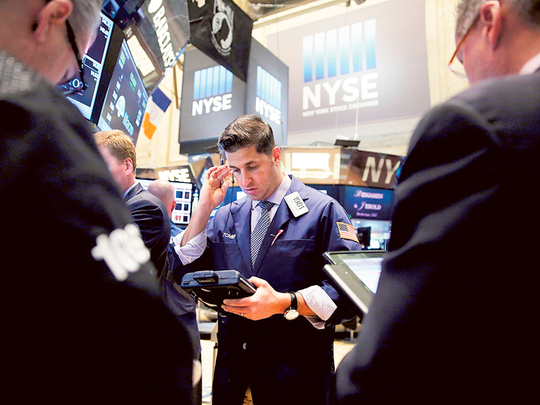
London: A recovery in oil prices spread to stock markets and emerging market currencies on Wednesday, with the prospect of more support from the world’s central banks offsetting more disappointing economic data.
After a dismal summer quarter in which global equities fell the most since 2011, traders say fund managers were ready to pile back in, hoping the recent market reversal was a hiccup rather than the end of a six-year bull market.
Wall Street opened higher on Wednesday as crude oil prices rose for the fourth day in a row, with Brent crude on track to post its best 4-day run in more than a month. However, the gain was largely driven by evidence of tighter supply and dwindling inventories after two years of heavy surplus and a collapse in commodity prices. Chevron rose 2.3 per cent and Exxon rose 1.6 per cent, providing the biggest boosts to the S&P 500.
The S&P energy index gained 1.9 per cent, leading the advancers among the 10 major S&P sectors. Nine of the 10 sectors were up.
Mining and energy shares were the big winners in Europe, up 3 to 6 per cent, with miners on course for their best week since 2009. Emerging-market stocks rose 2.4 per cent, to their highest level since mid-August, although tourism and airline stocks fell on the prospect of a squeeze on profits from higher input costs.
Asian shares reached a seven-week high. South Korea’s Samsung Electronics improved sentiment when it issued a better-than-expected profit guidance.
All that left global equities set for their sixth straight day of gains and just 5.5 per cent below where they were at the end of June, before a summer sell-off hit markets.
“We think we’re setting up for a strong fourth quarter rally, even if the next few weeks remain volatile ... We are starting to see a rollover in momentum strategies and we expect this to continue,” Morgan Stanley strategists wrote in a note.
However, there was little reason for more optimism on the underlying economy on Wednesday. Data showed German industrial output fell in August at its fastest pace in a year and growth in Spanish output slowed. British industrial output did recover better than expected, however, pushing up sterling.
Although the Bank of Japan held off on expanding monetary stimulus on Wednesday, expectations of more support rather than less is growing, as worries mount over a global economic slowdown. This week, the International Monetary Fund cut its forecast for growth again.
“The sense is that interest rates are not going to rise in the foreseeable future,” said Deutsche Bank Managing Director Nick Lawson, adding that after a rough September investors were ready to put more firepower into rebound bets.
“The market is proving its addiction to QE (quantitative easing).” Investors have scaled back expectations the Federal Reserve will raise interest rates this year after surprisingly weak US jobs data on Friday. Worries over the American economy grew after the largest expansion of the US trade deficit in five months.
Corporate earnings are also expected to bear the scars of summer volatility. Yum Brands, Adobe, Rexel and Kloeckner were the latest companies to cut their profit forecasts.
While Citi strategists have warned that analyst earnings forecasts are too optimistic, they have also backed the view that the bull market has yet to die with a prediction that global equities will still rise 20 per cent through to end-2016.
The market is “already pricing in” a gloomier scenario, they argue.
Beaten-up emerging markets, meanwhile, got a lift to their currencies amid the rally. The Indonesian rupiah surged 2.3 per cent on Wednesday, taking its gains so far this week to over 5 per cent. The Malaysian ringgit MYR= also jumped 2.4 per cent.












